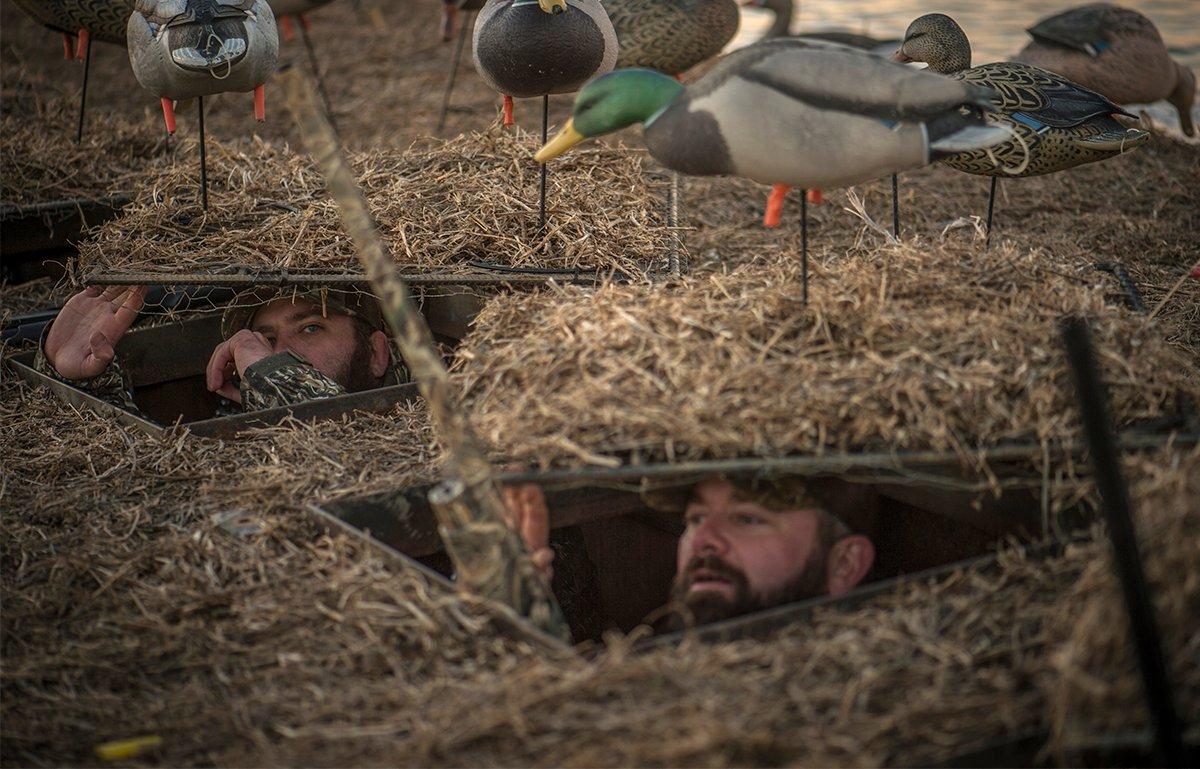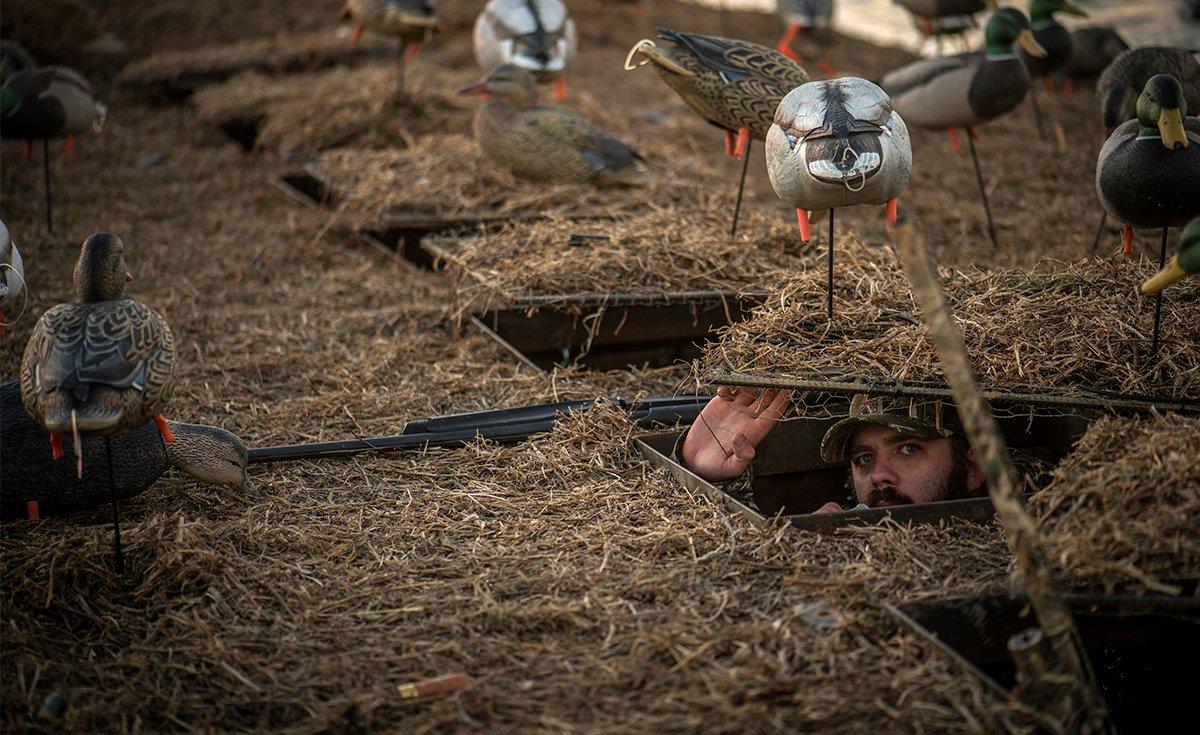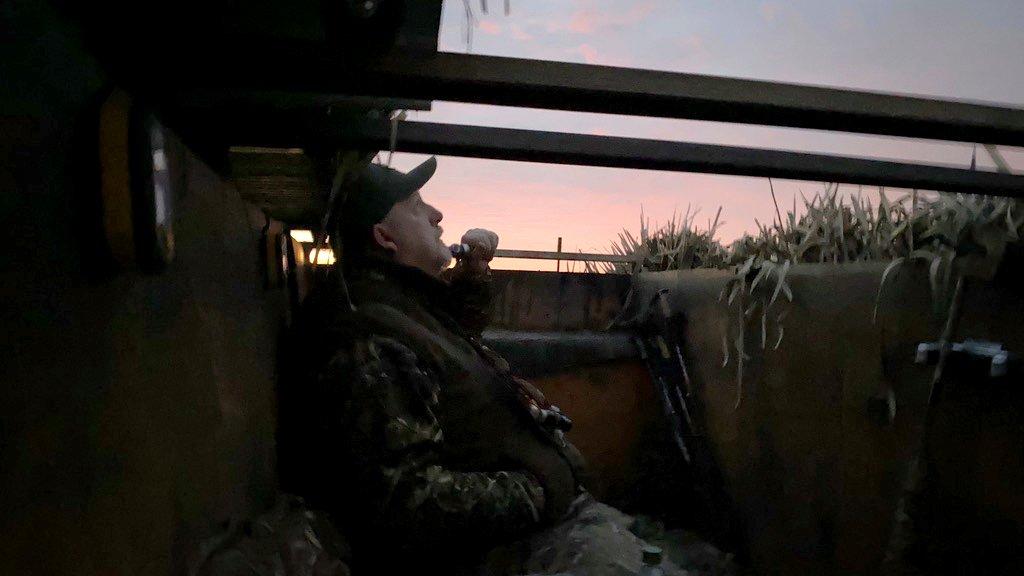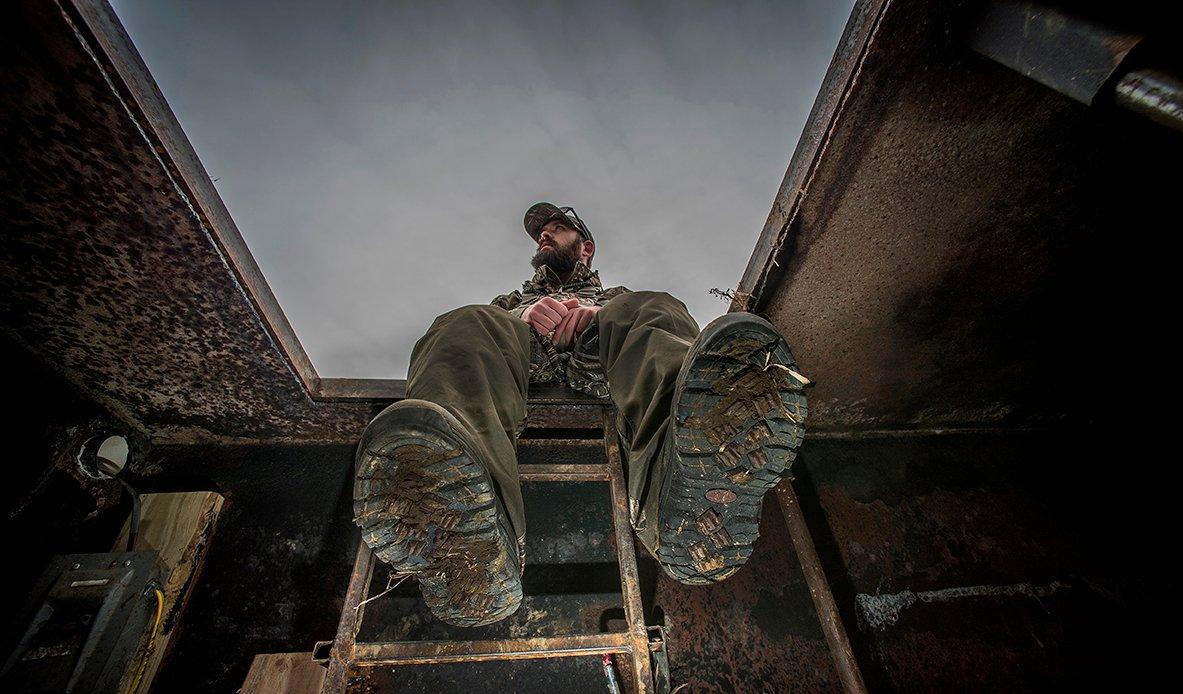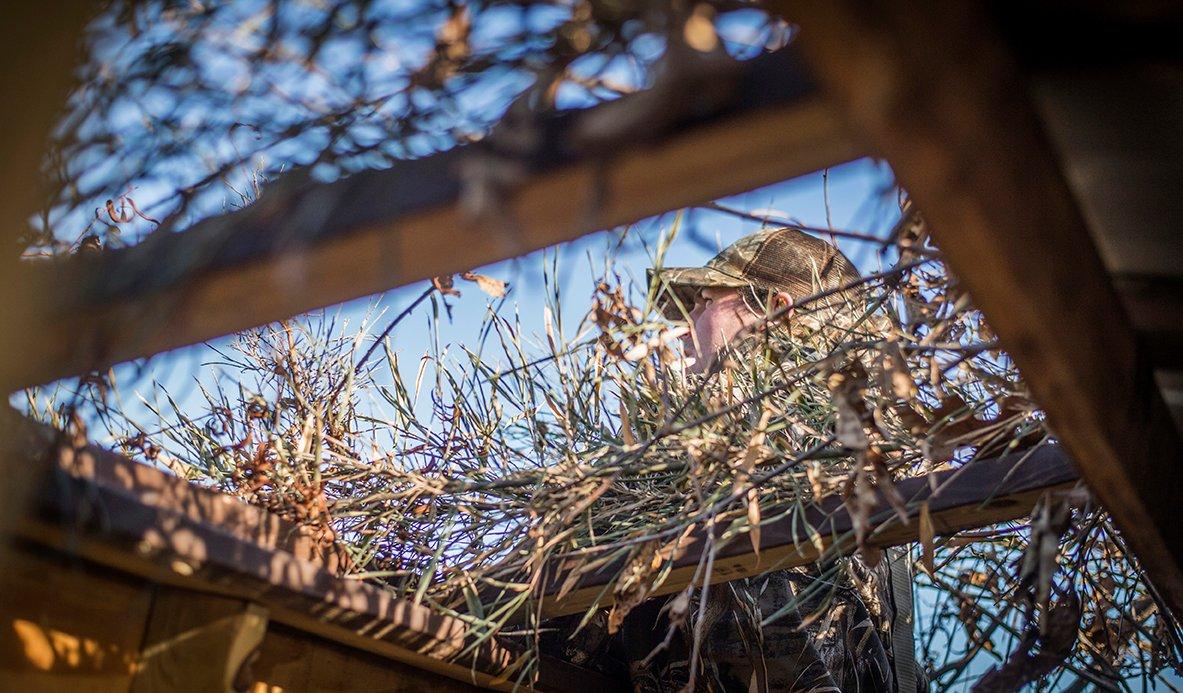Pit setups in ag fields are a Southern duck hunting tradition. However, finding a good one can be tough. Here's what the pros look for — and avoid — when considering a lease.
A drive from the Missouri Bootheel through eastern Arkansas reveals a landscape littered with rice and bean fields — and, it seems, a pit blind at every glance.
That's just a snapshot of a common duck hunting phenomenon in the mid-South. Fields with pits command a premium in many areas of Missouri, Arkansas, and Louisiana. Some are productive honey holes. Others suck. And it's often difficult to discern good opportunities from poor fields and even rip-offs.
Veteran hunters from the region agree that the situation is tricky, but experience has taught them what to look for and avoid when wondering whether to lease a pit. Consider their tips before laying down your money.
(Don't Miss: The Pit Boss Rules)
Major Rules
To a novice observer, any pit blind in a flooded crop field along a major migration route seems like a no-brainer. After all, those spots have water and food and are near areas where migrating ducks congregate en masse. However, not all pits or fields are equal. Some leases are just afterthoughts for landowners wanting to make extra income from their property. And a few are outright scams.
If they're up for lease, most of the time that can mean they're not very good, said Eric Rinehart, owner of North Delta Outfitters in southeastern Missouri. Getting the good spots is hard because people are keeping them for themselves, or they're going to be really expensive: $10,000 to $15,000. I think the expectations of people are really high, and that's a problem. Spots that kill 500 ducks are few and far between, and there aren't many left. And if you happen to find one, they're going to be expensive or are usually leased out.
Veteran Southern duck hunter James Buice said pricing can provide clues about a field's potential and even the owner's intentions. Some pits go for a grand or two, he said. Those are usually the scammers. The better ones are up to nearly $10,000. Some farmers just toss pits in a levee, flood a field, and then lease them to folks. No history, no imprinting — just an open field with water in it. $5,000 to $8,000 for the season is the going rate where I am. Add $2,000 to $8,000 or more around Stuttgart or the Grand Prairie.
Buice and Rinehart agreed that obtaining quality references is the top priority when considering leasing a field. Rinehart suggested that hunters talk to locals about spots to see if those areas traditionally attract and hold ducks. Even then, hunters shouldn't rush to a decision. It can be a long process, Rinehart said. I would suggest that everybody do a lot of research and talk to as many locals as you can. Maybe talk to the people who hunted it before.
(Don't Miss: 5 Snow Goose Stops You've Never Tried)
Other Considerations
Hunters should also examine other aspects of a pit setup to determine its viability. Rinehart said that starts with the type of crop in a field. Rice is my favorite, he said. And that's the problem. There's going to be a rotation between rice and beans, so if you get a good spot, it's going to be in a rotation. Sometimes it's a down year for hunting when it's beans, and sometimes it isn't.
Rinehart also said prospective lessors should avoid pits that are seemingly just stuck in the middle of a field and not in prime position in rice levees. Make sure they're in the right end of the field where the water is deeper, he said. That usually helps. You can tell if they're just stuck in the field for the owner to get paid.
Also, although it might seem difficult, try to avoid overcrowded areas. In some areas, there's a pit in every 80-acre field, and that makes hunting pretty tough, Rinehart said. It can be a tossup. Ducks like certain fields some years and certain fields other years.
Many hunters assume fields near refuges will produce better, but Rinehart said that's not always true. Being close to refuges has its benefits, he said. You're close to thousands of ducks, but also, those ducks can decide they're going to sit for a week, and that can make it tough. I like to be between refuges and not just beside them. And if you're right by a refuge, the money is going to get really crazy just because there aren't many of those spots. People like to see ducks. They don't necessarily like to kill them, but they like to see them.
Buice said it's wise to closely examine at any potential lease agreement, as some landowners might sublease a pit to another hunter who shoots ducks when you're not there. Or, some landowners will double-lease pits, with one group hunting weekends and another during the week.
(Don't Miss: 12 Reasons Duck Hunters Get Skunked)
A Look in the Mirror
Finding a promising field is only part of the battle. Rinehart said hunters must also temper their expectations. Numbers can be so deceiving because the previous group might have only hunted three to four days in a season, he said. Maybe the pit killed 150 ducks but was only hunted six or seven times. That's pretty good. A lot of people struggle with that.
Likewise, Buice said hunters must also use common sense when hunting a good field, as too much pressure can burn out even the best spot. We will not hunt a pit for more than two days out of seven, maximum, just to give the ducks time to recover and not burn out every duck that's flying over the place, he said. The big problem with a pit is fixed position, and all the stars have to align, or it has to be a really good hole. I mean, you can stack the odds in your favor by tossing out some ice eaters and having it be the only open water around, but I'm not the only guy with that idea.
Conclusion
Obviously, the question of whether to lease a duck field is complicated and potentially gut-wrenching. And it might take a long time to find a good available pit setup. Some hunters might think that effort and the money aren't worth the hassle. However, Buice emphasized that when the stars align, the work, wait and expense can be rewarded.
A pit and a good hole that's not shot more than two or three times every few weeks is worth its weight in gold, he said.
The challenge for duck hunters is finding those spots.
(Don't Miss: Our 30 Best Mallard Hunting Tips)
Bonus: What About the Pit Itself?
Securing a good duck hunting field with a pit setup is a major accomplishment. However, some folks fail to consider the pit itself — the structure where you'll spend hours waiting for ducks.
Veteran guide Cooper Olmstead, of Habitat Flats, said the biggest concerns with pits are safety and concealment.
Safety is the biggest, he said. You're essentially in a metal box in the ground with loaded firearms, so you need to be extra cautious and take every step you can to ensure everyone's safety.
Olmstead and his fellow guides cut gun notches and install high-strength magnets in them to hold firearms, securing them against being accidentally bumped or dislodged.
Also, it's important to make sure the pit is clean and gear can be organized and out of the way, he said. Pits are wet and slippery, making it easy to trip and fall if anything is in the way or on the floor. I'm also big fan of pits that have a platform or stairs that you use to get into them. I'm not a big fan of just having a ladder built in. I've seen way too many people, myself included, slip and fall down them.
Although the opposite seems true, concealing hunters in a pit can be difficult. Overhead cover can be critical, especially during sunny conditions or when hunting with big groups of folks who might be tempted to look up at passing birds.
I've hunted out of pits with flip tops, swing tops, roll tops, drop tops, and just grass bundles filling the shooting holes, he said. Every top has its pros and cons, with none of them being really perfect to me. It's really just whatever you prefer as a shooter and whatever makes it easier for you to get in and out of the smoothest and safest.
(Don't Miss: Realtree MAX-7 is Our Most Effective Open-Country Waterfowl Pattern Yet)

